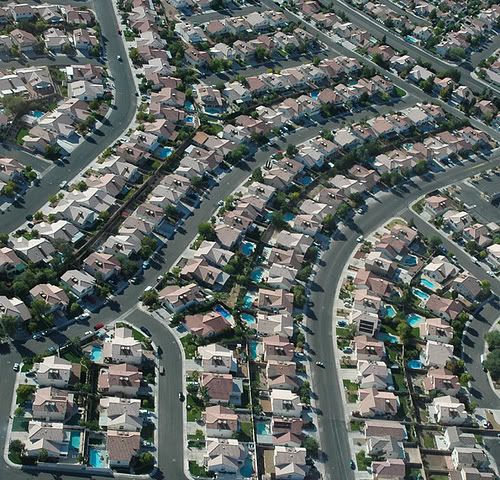In my early 20s, I moved to an apartment in downtown Fullerton, and have lived there ever since. I love it. I love that I see my neighbors every day, face to face, that I am a part of a small urban community. For a long time, I had a hard time explaining to parents and friends exactly why I had no desire to buy a house in a quiet suburb.
Today, while reading the book Postsubruban California: The Transformation of Orange County Since World War II, I found the answer. It’s like when you are reading a novel and you find a passage that almost directly corresponds with your life. It is quite a feeling. Anyway, here’s what I read:
“Many of the residential and commercial structures are implicitly designed to emphasize private domesticity and material consumption...Many of the more affluent neighborhoods are designed so that individual homes are walled off...Such residential designs turn people inward toward the private spaces of their homes. Residents who walk through their neighborhoods may see some of their neighbors out doing yard work by day. But such neighborhoods do not provide much support for casual interaction and thereby dilute the possible richness of public social life.”
Amen, Spencer Olin, professor of history at UCI. Another point Olin high-lights is the sameness of Orange County architecture, which is largely the result of rapidly built housing tracts. He writes, “Orange County’s residential neighborhoods, like those in many other urban regions after World War II, are often devoted exclusively to tract houses.”
Thus, the suburban environment promotes sameness, social isolation, and consumption. By contrast, the urban environment promotes diversity and community. That, my friends, is why I prefer my dumpy little apartment downtown to a nice suburban home.

